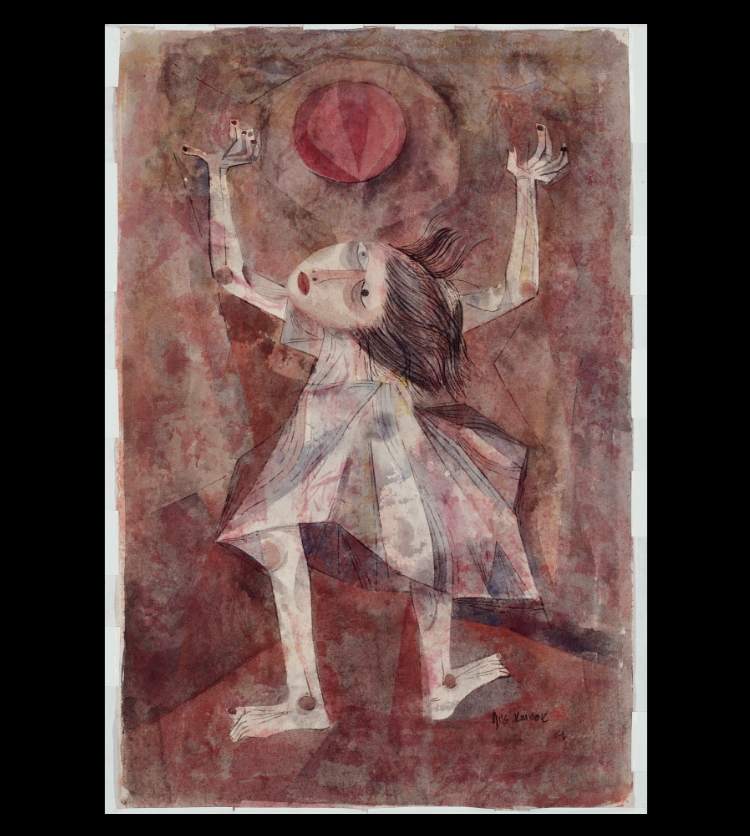Looking carefully at this little girl playing with a ball, would you say it is joy that is revealed in her expression?
Have you noticed there are two holes on her ankles that look like wounds? Doesn’t that hurt?! But does the girl look like she’s in pain?
From this work titled Little Girl Playing with a Ball, we can see how the artist Ang Kiu-kok combined a cubist composition with a theme that moved him to develop his own unique expressionist cubist technique. Ang used the visual vocabulary of cubism, namely cutting, overlapping, monochromatic colors, and multiple perspectives. However, the main goal is not the representation of the subject, but to express the feeling of tragedy of an ordinary person. Without an exaggerated and dramatized feeling, Ang’s understated and ambiguous manner of expression somehow manages to make our eyes linger on the painting, unable to pull away. At the same time, it compels us to imagine or think about the main character’s situation—or our own.
Ang Kiu-kok was born in the Philippines, descended from Chinese immigrants. He was deeply influenced by the development of modern art in the Philippines that occurred in the 1950s and 1960s, which led him to make works of modern art that fused cubism, surrealism, and expressionism. He has made many contributions to the visual culture of the Philippines; and in 2001, the Philippines conferred on him the title of National Artist, thereby establishing his unshakeable position within Southeast Asian modern art circles.
